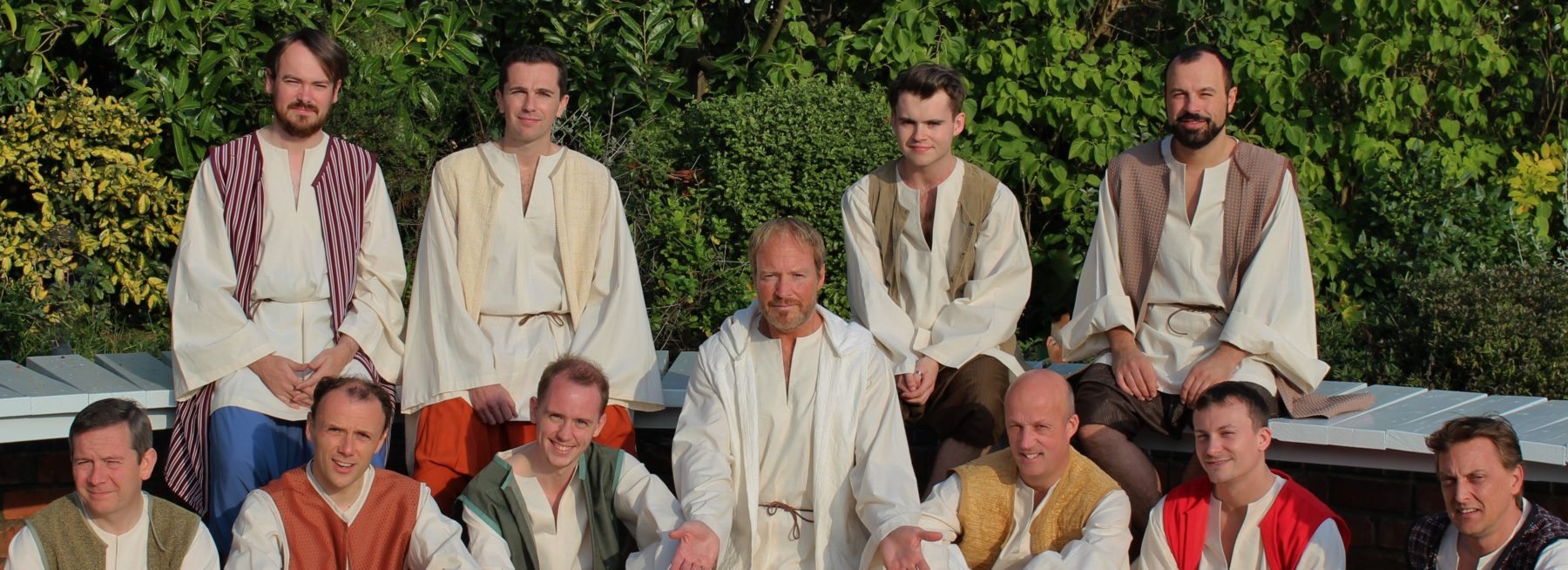Review: Leamington Spa Opera Group present ‘Jesus Christ Superstar’
Jesus Christ Superstar was first performed on Broadway in 1971 with music by Andrew Lloyd Webber and lyrics by Tim Rice, dazzling the world time and time again in the interceding years. The Leamington Spa Opera Group’s amateur production of this epic musical, performed at the Spa Centre, lives up to the tradition.
the cast flourished in a retelling of a familiar story that has the potential to leave you reeling.
For the first act, one of the performance’s strongest features also formed part of its weakest. The Orchestra was a fantastic, obviously crucial, element to the musical and succeeded in bringing the rock opera style vibrantly to life. However it was too loud. The performers on stage struggled to compete with the volume, which was a continual impediment in understanding what was going on, as the actors dropped in and out of hearing range.
Fortunately the Biblical story of the days leading up to Jesus Christ’s crucifixion is well known enough that the performance did not collapse into the incomprehensible, leaving more attention available to follow the actors physical performance which conveyed an impressive amount of emotion and vigour. The interplay between Jesus (Mark Randall), Judas (Nathan Dowling) and Mary Magdalene (Claire Aston), was eloquently conveyed in this fashion; in places Judas or Mary would physically pull Jesus away from the other, in perfect expression of the tension over his trust and attention between them.
The company also performed well, with ‘The Temple’ standing out as their best scene, switching easily from the immoral crowd, populating the Temple before Jesus’ arrival, into the unnerving, creeping Lepers from his later dream. The latter also provided one of Mark Randall’s strongest scenes, as he depicts a Jesus overwhelmed by the weight of the task he’s been trying to accomplish and the rapidly approaching conclusion, lamenting: ‘My time is almost through, little left to do. After all, I’ve tried for three years. Seems like thirty, seems like thirty’.
The second act is where the performance unreservedly hit its stride. During the interval most of the technical issues had been resolved, leaving the audience with much better access to the phenomenal final half. In contrast to the first act it becomes impossible to pick a favourite out of the final numbers.
Perhaps the fraught ‘Last Supper’, where Jesus and Judas have their dramatic split? Despite knowing the story’s conclusion, the fallout is edge-of-your-seat dramatic because of how human the characters are made, an intention emphasised throughout the production.
The clashing emotions of Jesus’ anger and heartbreak at Judas’ betrayal, against the latter’s guilt and pre-emptive grief, forms a destructive whirlpool, one more than capable of producing pity in its audience. This ability for the Son of God to inspire sympathy for characters that are traditionally made emotionally distant from their audience is a talent of Jesus Christ Superstar.
An admittedly bizarre highlight was ‘King Herod’s Song’. Hysterically funny, incredibly flash and a role expertly commanded by Aaron Gibson; a complete U-Turn from the rather depressing goings on otherwise. It has to have an honourable mention as one of the most well-choreographed and entertaining scenes of the production. However did create something of a whiplash as the audience was bounced from an intense interrogation to a lonely dungeon, with an interlude at The Rocky Horror Picture Show.
‘King Herod’s Song’ alongside the less amusing but equally strange ‘Superstar’ number are the exceptions to the otherwise depressing norm. The ‘Crucifixion’ scene with Jesus strung out on the cross, dripping with blood and flanked by the two thieves crucified with him, sets the final tone of the performance. This closing scene was very well done, aided by the clever set that allowed the cross to be to erected and pulled down seemingly independently with a discordant affect.
It’s interesting that this is the scene that Jesus Christ Superstar ends on. The two Marys, Magdalene and Jesus’ silent mother, along with the disciples carry Jesus’ body off stage and the performance ends. There is no resurrection or ascent to Heaven. The decision to cut the story here made by Andrew Lloyd Webber and Tim Rice back in 1970 implies that Judas was right all along, was right to think that Jesus was just a man that when killed would stay dead.
All in all, it was a fantastic performance. Once the issues with the sound system were overcome, the cast flourished in a retelling of a familiar story that has the potential to leave you reeling.


Comments